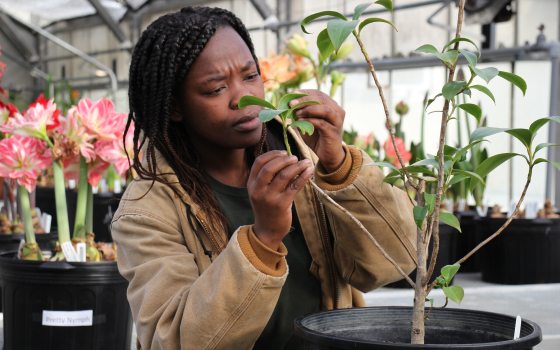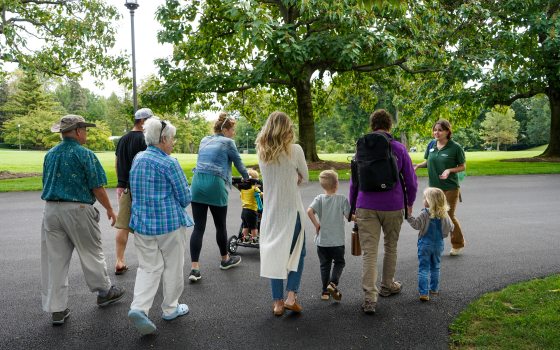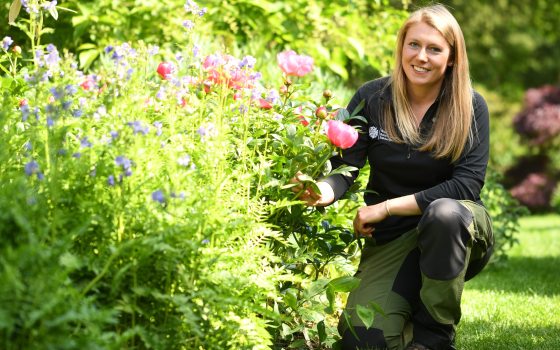Leaving home is never the easiest thing to do at any point of one’s life. As a matter of fact, leaving home for the first time to travel to a different part of the world, to come to Longwood as part of the International Internship & Training Program, was a hard choice for me, but the right choice for my career, and a way in which I could experience a culture of kindness and inclusion. On September 10, 2022, I got on a plane from the King Shaka International Airport in Durban, South Africa and almost 31 hours later I was Longwood Gardens. On September 12 I began my internship, and am now six months into my internship. Joining me are three other international interns from South Africa: Asiphe Mtsuma, Phindile Ngobese, and Zamasodi Mkhungo. It has been really helpful having other interns from back home join me in this new journey, as it feels like home is never too far away.
For many Longwood is a botanical sanctuary where they can come to enjoy the beautiful displays that are on show through throughout the year. For an international intern it is a learning experience. Spanning nine months, the International Internship & Training Program features rotations throughout a variety of areas, which can be customized by intern. As a horticulture intern, I’ve spent time working within many of Longwood’s horticultural teams, including Library and Information Services (Plant Records), Integrated Pest Management, Research, Production Nursery, Conservatory Display, and Outdoor Landscapes.
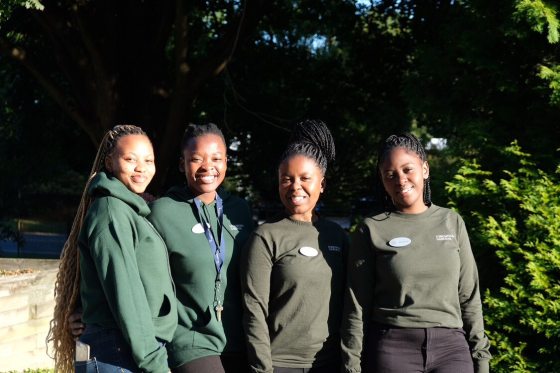
The 2022-23 Longwood international interns from South Africa include, from left, Asiphe Mtsuma, Siphesihle Sibiya, Phindile Ngobese, and Zamasodi Mkhungo. Photo by Sam Fry.
During my time with Plant Records, I learned how to our plant records database system. At Longwood, we go above and beyond to ensure that our collections have all the necessary geographic data attached to them, and during my rotation, I helped issue brass tag labels which contain the accession number of the plant. The accession number is the equivalent of a social security number and can be used to trace the origin of our plants and the locations in which they can be found in the garden. We also studied geographic mapping, identifying what was in bloom in the Gardens, orchid barcoding, and plant labeling.

In the above, I’m working on orchid barcoding, a process that allows us to track the specific location of each plant. Photos by Phindile Ngobese.
Next, I was off to the Integrated Pest Management rotation. I have to say, a lot can be learned from this division of horticulture. During this rotation, I helped scout for pests, including spider mite, thrip, whitefly, mealybug, scale, and a combination of those pests. We scout all our greenhouse plants, as well as the plants that are on display. We try to avoid any incidences of high infestation by going on regular scouts and contacting our horticulturists with recommendations to mitigate chances of infestation, and if an infestation has occurred, we offer recommendations on how to best deal with that pest. We also run plant diagnostic tests to figure out what disease might be affecting plants.
You didn’t forget about the research rotation, did you? From culturing plant varieties to being involved in the introduction of new species to be trialed, the research rotation has it all if you dream of being a research scientist. During this rotation, we focused on testing the viability of seeds, testing the pH and electric conductivity of our soils, tissue culture, and data collection and recording.

Participating in soil testing in the tissue culture lab was one of the components of the research rotation. Photos by Phindile Ngobese.
Though I have not yet rotated into the Production Nursery and Conservatory areas, I have spent bouts of time with them on busy days, helping with constructing hanging baskets, feeding plants, plant pruning, and placing displays. These are the things I look forward to having fill the rest of my internship here at Longwood. Outdoors will be abuzz in spring, and luckily for me, that will be my last rotation and I will get to work with the various outdoor teams to maintain those displays and gardens.
The greatest joy of this internship for me has been found in not just the work I have been doing from day to day, but it has also been the people I have met here in the garden. From the day I arrived, the staff here at Longwood was so welcoming, and for the first few weeks I thought it was only because we were unfamiliar faces and they wanted us to settle in better. That, fortunately, was not the case. Longwood staff, students, interns, and even guests are the friendliest people I have had the pleasure of meeting and interacting with in my life. Not a single interaction has gone over my head, I have felt included in conversations at every turn.
As I write this, I am appreciative of the efforts that Longwood has put forward to ensure that I have a good experience during this period, through my work rotations, but also culturally through including me in activities that I have not had the pleasure of indulging in as they are not so significant back home. For one, I have been to Lancaster and enjoyed a beautiful sunset at a family farm where my housemate is from; it is on this trip that I had my first sip of apple cider, I say sip very lightly as I eventually finished the hot beverage. Thursdays are reserved for student cultural activities which include trips to museums, libraries, gardens, and activities that are not only culturally significant in that they differ from my day-to-day experiences, but because they also introduce you to Longwood Gardens’ culture and what drives the identity of our garden.
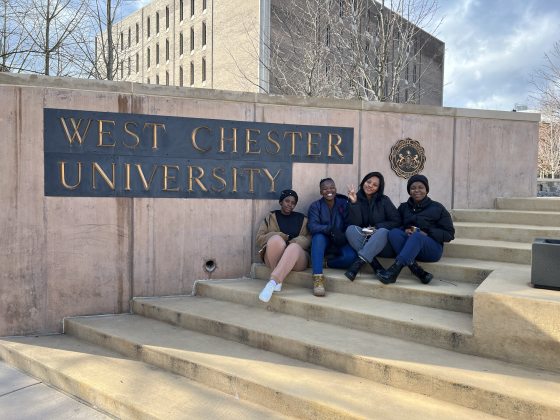
One of our weekly activities took us to West Chester University. Photo by Brittany Long.
I have come to understand that Longwood Gardens is not only good at putting up wonderful displays for all to enjoy, but also a game player in giving students an opportunity to expand their horizons, career-wise, and all this while having a culturally enhancing experience. In the event that you do come to Longwood, for any reason, be ready and at ease to accept a new culture, a culture like no other, a culture so beautiful and rare in the world these days … a culture of kindness and unconditional inclusion. This culture does not stop at you feeling like a part of the team—you are the team—but it extends to being part of a unit, made of different departments and subdivisions that work so seamlessly together to function as a single entity.
Editor’s Note: Applications are currently open through May 1, 2023 for our 2023-24 International Internship & Training Program. Learn more about the program and apply here.
